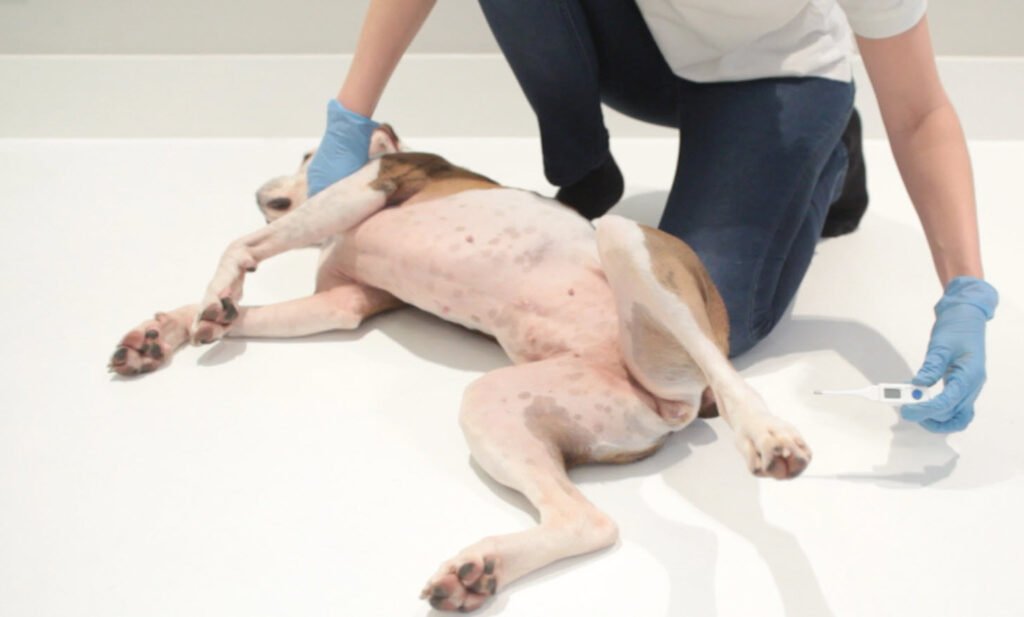
As a pet owner, it’s essential to be prepared for any emergencies that may arise with your furry friend. Just like humans, pets can experience accidents or illnesses that require immediate attention. Knowing basic first aid procedures can help you provide critical care to your pet while waiting for professional help.
These procedures are intended to stabilize the pet’s condition, reduce pain and suffering, and prevent further injury or worsening of the existing condition until veterinary care can be obtained. Examples include CPR, wound care, choking management, and heat stroke treatment.
Here are some emergency first aid procedures for your pet:
1. Toxic Exposure
Toxic exposure refers to the harmful effects that result from contact with chemicals or substances that are poisonous or hazardous to human health. This can occur through inhalation, ingestion, or skin contact, and can lead to a range of adverse health effects, including cancer, neurological damage, and respiratory problems.
Protective measures such as personal protective equipment and proper ventilation can help prevent toxic exposure.
Signs: Red Eyes, Whining, Pawing At Nose
Caution:
- Call veterinarian immediately: If your pet is experiencing a medical emergency, it is important to call your veterinarian immediately. Delaying medical attention can worsen your pet’s condition and even be life-threatening. Quick action can increase the chances of a successful recovery.
- Follow instructions on packaging for rinsing/decontamination: When dealing with potentially hazardous materials or chemicals, it is important to follow the instructions on the packaging for rinsing and decontamination. This will help to ensure that any residue or contaminants are properly removed, reducing the risk of exposure and harm.
- Keep product out of eyes, mouth or nose: When using products such as cleaning agents, personal care items or medications, it is important to keep them out of the eyes, mouth, and nose. Accidental exposure can cause irritation, burns, and other adverse effects. If contact occurs, flush the affected area with water and seek medical attention if needed.
2. Poisoning
Poisoning occurs when a person or animal is exposed to a toxic substance, such as chemicals, drugs, or poisonous plants. Symptoms can vary widely depending on the type and amount of toxin involved, and can range from mild to life-threatening. Immediate medical attention is crucial in cases of suspected poisoning.
Signs: Vomiting, Diarrhea, Foaming At The Mouth, Gagging
Caution:
- Call your veterinarian or the animal poison control center hotline immediately: If you suspect your pet has ingested a toxic substance, it is important to call your veterinarian or the Animal Poison Control Center hotline immediately. Quick action can be critical in preventing serious harm or even death.
- Identify name/description of the substance: When reporting a potential poisoning to a veterinarian or poison control center, provide the name/description of the substance, the amount ingested, and how much time has passed since the ingestion. This information can help determine appropriate treatment and prognosis for the animal.
- Have the product container/packaging available for reference: When seeking medical advice or treatment for a potential poisoning, it is important to have the product container/packaging available for reference. This can provide critical information on the substance involved and aid in appropriate treatment.
- Collect any material your pet may have vomited or chewed: If your pet has vomited or chewed on a potentially toxic substance, collect any material and place it in a plastic sealable bag to take with you to the veterinarian. This can aid in identifying the substance and determining appropriate treatment.
3. Seizures
Seizures are sudden, uncontrolled bursts of electrical activity in the brain that can cause a variety of symptoms, such as convulsions, loss of consciousness, or abnormal behavior. They can be caused by a number of factors, including head injury, epilepsy, infections, and drug overdose. Treatment varies depending on the underlying cause.
Caution:
- Do not restrain the animal: If your pet is experiencing a seizure, do not restrain them. Instead, move any objects that could cause injury and provide a safe and quiet environment. Contact your veterinarian immediately for further guidance and treatment options.
- Move objects out of the way: During a seizure, move any objects out of the way that the animal could run into or injure itself with. Creating a safe space can help prevent further harm and provide a calmer environment for the pet.
- Speak to the animal in loud: When a pet is experiencing a seizure, speak to them in loud, reassuring tones. This can help provide comfort and reduce stress during a frightening experience. Avoid touching the animal during the seizure, as it can increase anxiety and risk of injury.
- Time the seizure: Timing the duration of a pet’s seizure can help provide important information for your veterinarian. Use a stopwatch or timer to accurately record the length of the seizure, including any pre-seizure or post-seizure behaviors.
- Keep pet warm and quiet after seizure is over: After a pet’s seizure has ended, keep them warm and quiet in a comfortable environment. This can help reduce stress and allow time for recovery. Monitor for any additional symptoms and contact your veterinarian if necessary.
- Call veterinarian: If your pet experiences a seizure, it is important to call your veterinarian immediately. They can provide guidance on what to do during the seizure and recommend any necessary follow-up care or treatment.
4. Choking
Choking occurs when a foreign object, such as a piece of food or toy, becomes lodged in the throat and obstructs breathing. Symptoms can include coughing, gagging, and difficulty breathing. If the object cannot be dislodged, prompt medical attention is necessary to prevent serious harm or death.
Signs: Difficulty Breathing, Choking Sounds, Blue-tinged Lips/tongue
Caution:
- A chocking pet is more likely to bite in its panic: A pet that is choking may panic and become more likely to bite. Approach the pet with caution and avoid placing your fingers or hands near their mouth. Seek immediate veterinary care.
- If the pet can still breathe, keep it calm: If a pet is still able to breathe during a choking episode, keep them calm and transport them to a veterinarian as soon as possible. If feasible, have another person call ahead to alert the clinic to the situation.
- Look into the pet’s mouth: If you suspect that your pet is choking, carefully open their mouth and look inside to see if a foreign object is visible. However, do not attempt to remove the object unless it is easily visible and easily removed.
5. Heartstroke
Heatstroke occurs when a pet’s body temperature rises to dangerous levels, typically from prolonged exposure to high temperatures. Symptoms can include panting, lethargy, vomiting, and collapse. Immediate treatment, such as cooling measures and intravenous fluids, is necessary to prevent serious harm or death. Prevention includes providing ample shade and water, and avoiding exercise during hot times of the day.
Signs: Excessive Panting, Rapid Heart Rate
Caution:
- Move the animal to a shaded area: If a pet is showing signs of heatstroke, move them to a shaded area out of direct sunlight. This can help prevent further heat absorption and provide a cooler environment. Offer cool water, but do not force them to drink.
- Place a cool wet towel around its neck and head: Place a cool, wet towel around the pet’s neck and head to help reduce their body temperature. However, do not cover their eyes, nose, or mouth. This can help facilitate cooling while ensuring that they can breathe freely.
- Transport the pet to a veterinarian: If a pet is showing signs of heatstroke, transport them to a veterinarian as soon as possible. Heatstroke can cause serious harm or death, and prompt medical attention is necessary to prevent further complications.








